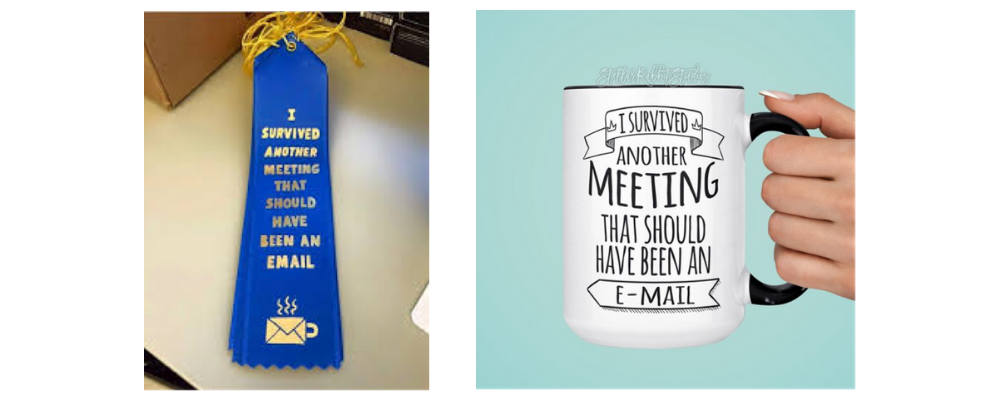I can't tell you how many times throughout my career I've seen coworkers leave a meeting with eyes rolling saying under their breath "email, people, ever heard of it?!" Don't get me wrong, face to face meetings are still essential in today's organizations for many reasons. We need to look across the table at our coworkers and connect in person, however, it is imperative that we examine the content shared during this connection to build buy-in and trust within our organizations. Our employees need to trust that we are being responsible with their time and treating them with the respect they deserve.

Below are my top tips for planning a kick-butt meeting that won't elicit the "should've been an email" eye-roll:
- Plan ahead: FIRST and foremost, you should not be rushing to your meeting jotting down notes on scrap paper for what you're going to talk about. Thought and time needs to go into planning this meeting because, as the saying goes, "if you have nothing [productive] to say, don't say it at all." Cancel that meeting if you haven't given the content foresight and planned something meaningful. People will feel like your meeting was a massive waste of time if they believe there was no reason for them giving their time for a list of announcements that could have been delivered any other way.
- Don't spend time on the outlier topics: The "what-if" conversations tend to elicit input from the minority and the majority are thinking "why am I even here?" Set up a process where a "parking lot" list can be used if a team member brings up something off topic or an outlier that doesn't impact the whole group. This comment can be listed on the "parking lot" for the leader to follow up on outside the meeting or at another time. Why not approach those outlier topics in person outside of the meeting and save your precious face-to-face time with topics that apply to most, if not all, of the group.
- Make it interactive: People are more engaged when they have to participate. Think of an element where you actually need feedback from the group and facilitate an efficient way to get them to give you that feedback. You could have people write a suggestion on a slip of paper and hand it to you, you could ask for feedback or orchestrate a discussion (if managed correctly so the loudest don't just take over). Depending on the size of your group, one could use a cellphone-based polling system to generate input or create a word cloud.
- Manage the talkers and the disengaged: Often one or two voices rise above the rest to dominate or derail a discussion. Find creative ways to right this imbalance. Ask them to capture notes on the whiteboard, which switches their mindset and curbs their comments. On the other hand, find ways to engage the introverts. One helpful way is to send the group the discussion questions ahead of time so that those that take longer to process come to the meeting with something planned and have a chance to share when most of the time only the spontaneous types share in the moment.
- Select a team member to be a time keeper: Most leaders highly underestimate how long each agenda item will take. By asking a team member to keep time throughout the meeting, not only will you stay on track, but it deters those that tend to be long-winded from pontificating for the sake of hearing themselves speak. The alarm tends to go off and people learn to speed up their comments and stay on track.
- Use alternate channels to make one-way announcements: Why is verbal announcement the only channel we use during meetings while reading off a long list of essential announcements? Why not list the announcements in a column on the printed agenda or put them on a slide on a screen to read when people are walking into the session? A leader can then have the team turn their attention to that list without taking up precious time reading a list of things THAT COULD JUST BE AN EMAIL!
- Finish with a check-in. Always end your meeting with a check-in. If the group is small enough, leave time at the end to go around the circle and ask every member to share their thoughts or take-always for 30 uninterrupted seconds. This gets each member in the habit of speaking to the group and sets the precedence that every member in that meeting is essential and needs to be heard. It is at this point that you verify every action item agreed upon in the meeting and who is responsible for making them happen. Have a scribe type up the final list and send it out post-meeting. Keeping things simple and clear is the best way to make sure everything gets done!
Remember, it is important for leaders to change their mindset about meetings. Think of this as a time for a two-way dialogue between employees and their leader instead of a leader running down a list of announcements. This emphasis on contribution changes the intentions of the meetings and creates more buy-in from team members who then start to see the reason why their attendance is necessary. Don't fall victim to another meeting that should have been an email.





